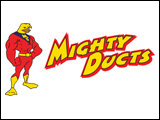Miracles and Other Reasonable Things (2019), by Sarah Bessey – A Book Review
The reason this book grabbed my attention was that, on a number of fronts, the learning curve Sarah Bessey went through kind of parallels mine.
Unlike me, Sarah grew up in a charismatic context in which miraculous healings were expected to happen on a regular basis. She says that in her faith community, “…we chased after the miraculous, the big movement, instead of after Jesus” (128). As a young adult, she became somewhat skeptical about this focus, especially when she noticed what happened to those for whom the miracle never came. “The victory either came or it didn’t by God’s magic – there was no middle-place theology, a theology of tension, of ‘yes, and’ for those of us who, yes, believed in the supernatural and in miracles and needed a muscular theology of suffering and unanswered prayers” (129).
In my world, we believed in miracles but perhaps it was not so singularly focused. What we did have in common, however, was the notion that, “…when we follow Jesus, all we do is win” (130). At least that is the impression that religious enthusiasts among us left with us. In both our cases, it seems to me that, “…it wasn’t until grief and unanswered prayers moved into my own home that I began to fully understand how a theology without language for lament and sorrow was insufficient” (129).
It was later in life that I began to encounter persons within friend and family circles who also insisted that a miracle was always just around the corner. And I also witnessed the anguish of those for whom the miracles they were expecting didn’t come. Some died with a sense of failure, loss and abandonment.
What creates the drama in this book, is that while Bessey was in the process of deconstructing some of her earlier understandings related to miracles, she unexpectedly was healed following a major car accident – through the prayers of Catholic pilgrims in Rome, no less.
The kicker comes when most of what was healed in Rome ended up being a “broken miracle” as the pain began returning. “I had experienced a miracle, and now it was slipping through my fingers,” she writes (152). Although she tried to fake her way to the narrative that she wanted to believe, she had to face the fact that her body no longer held the miracle she thought she had in the bag. And that now her challenge was, “…to learn to love my broken miracle” (157).
This is another place where my story intersects with that of Sarah Bessey’s. About four years ago, my journey had taken me to a place where I no longer could believe in hell as conscious, eternal torment. That had been a long and torturous journey, but along the way I discovered that the trauma I had endured as a youngster living in constant fear of hell had never been healed. So I submitted myself to a prayer journey that took me back to those nightmares of despair where Jesus removed all those wounds in a miraculous way. Thankfully, that miracle stands rock solid.
However, a second miracle that happened simultaneously was that I was healed of regular bouts of shoulder and neck pain. I didn’t ask for it, but the miracle happened. Of course I rejoiced in this unexpected healing. Yet, for reasons I still don’t understand, my shoulder and neck pains began returning after about a year. So, along with Sarah, I could say that I was now living with a failed miracle.
So how does one proceed? Sarah points in some helpful directions. She notes that sometimes our ideas about miracles are too narrow and restrictive. Whenever we receive help from some medical practitioner or from medications, those too are miracles which we often overlook. So, like Sarah, I have returned to seeking out various kinds of help, some of which have helped considerably. And I too, am in the process of learning to “love a failed miracle.” My spirit resonates with the thought that came to Sarah, “As much as you are able, choose life.”
Also, I am on Sarah’s page when she writes, “Like most of us, when I walked through my own valleys of darkness and suffering and loss, God was often revealed to me in the darkness rather than in the light. The valleys were where I became intimate with God, far more than on the mountaintops” (132).
But there is at least one more thing I picked up from Sarah’s story that has encouraged me. Sarah is a mother and reflects on how she cared for her children when they were hurting. Building on the historic affirmation of the church that God is neither male nor female and therefore free to care in whatever way God wants, Sarah began to think of God as a nurturing mother and found great solace in this practice.
Back when I was young you only thought of God in masculine terms. Hence, my father became kind of a stand-in for God. But, living as he did with so many unhealed wounds, he had great difficulty reflecting the nurturing face of God to me as a child. I have long since come to terms with my father and love him for who he was. But Sarah’s story gave me permission to think of God as a nurturing mother. And I had a nurturing mother who ranks among the best. I have countless memories of mother caring for me in a tender and selfless way. Making this connection opens a new door for me. I can indeed lean on a nurturing God like I leaned on my mother! Maybe one day I will even sing with Sarah, “She Has the Whole World in Her Hands!”
Thanks, Sarah for a book that touched me deeply, made me cry, and encouraged me to live well with a failed miracle.



